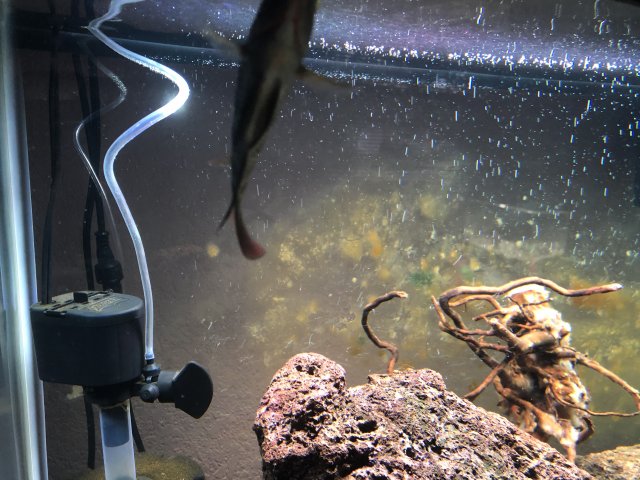Hi everyone, I have been wondering about this and today I noticed my fish biting the top of the water and then immediately some bubbles come out of his gills and mouth. I have heard fish will try to make their own oxygen when there is not enough in the water. Just wondering what is the safest and most efficient way to add oxygen to the water? I have an air pump rated for a 20g but it provides LOTS of bubbles at least it looks like a lot to me. I added this to my sponge filters powerhead and it makes tons of tiny “micro?” bubbles. Another question: are these safe and/or efficient to add oxygen to water? I have read different oppinions some say that theyse micro bubbles can be harmful to fish, gills, eyes, etc. idk tho sounds weird any info will be appreciated!

edit: the air pump was not being used until I noticed him biting for air or at least thats what I thought he was doing.

edit: the air pump was not being used until I noticed him biting for air or at least thats what I thought he was doing.












